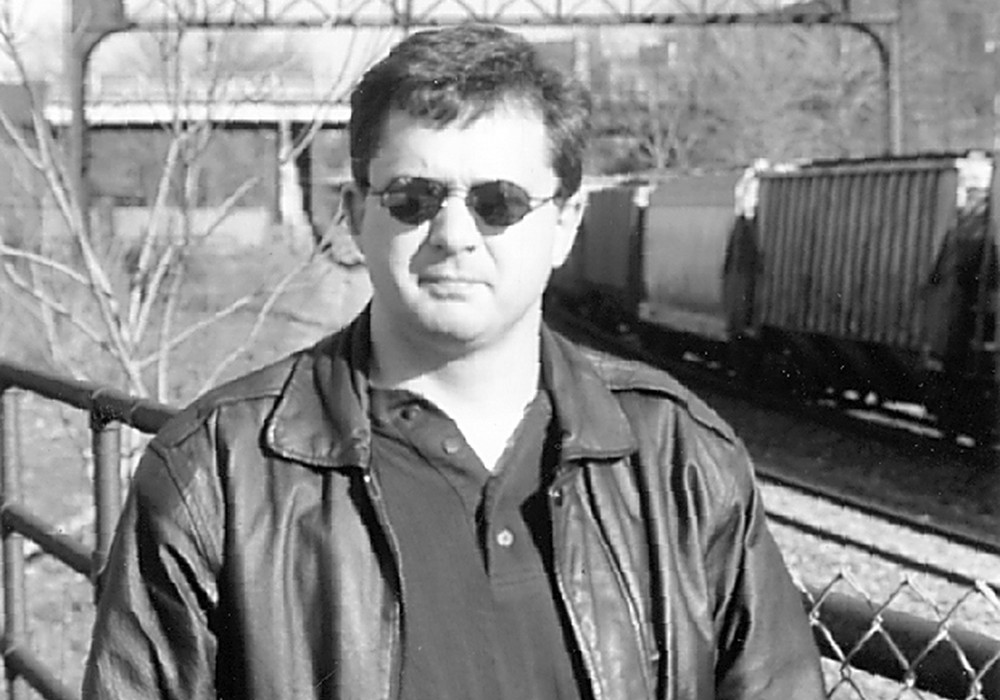As a longtime synth geek, I sometimes wondered whatever happened to TONTO, the modular behemoth featured on Stevie Wonder's great seventies records Talking Book, Innervisions, and Fulfillingness' First Finale, and on one of the greatest electronic albums ever, Zero Time, written and performed by the enigmatic TONTO's Expanding Head Band. It was easy to assume that TONTO (an acronym for "The Original New Timbral Orchestra") had been consigned to the dustbin of musical history — after all, this was the age of miniaturization. And then I heard from a friend, the science historian Trevor Pinch, that Malcom Cecil — co-creator of TONTO, half of the Expanding Head Band, and the "Fulfillingness" of that cryptic album title — lived not far away, but near Saugerties, New York — and that TONTO was alive and well!
WHAT'S INSIDE TONTO?
2 complete Moog Model III's
2 ARP 2600's
4 Oberheim SEM's
More modules by Malcom, Serge Tcherepnin, and Armand Pascetta Roland and EMS sequencers Roland, Moog, and AKS keyboard controllers Moog ribbon controller
2 Moog 1130 drum controllers
Roland MIDI-CV converters
128 feet of power cable left over (Malcom swears) from the construction of Apollo 11
As it happens, Malcom Cecil is also an accomplished jazz bassist, a Grammy- winning record producer, and a witness to the early days of tape operating — and he is presently involved in a project to re-master rare live jazz recordings, originally made exclusively for broadcast, from lacquer discs. Trevor, who wrote about Malcom in his superb synth-history book Analog Days, suggested we pay the great man a visit. And so, on a sunny Sunday in August, we headed out for the Hudson River Valley, along with our friend, photographer and electronic music composer James Spitznagel.
Malcom lives with his wife, Polly, in a cozy house on a secluded street a couple of hours north of New York City. A wiry man with a wild halo of gray hair, Malcom is ebullient, cheerful, intelligent and enthusiastic — a personality big enough to withstand the upstaging force of TONTO! After a delicious brunch prepared by Polly (and a look at her amazing sculptures made out of molded styrofoam packing material), we headed out to the barn where Malcom's studio, and TONTO, are kept.
The studio is packed with eye candy: gold records on the walls from gigs with Stevie Wonder, the Isley Brothers, and Bobby Womack; a Studer A-820 and a Scully 2-track; a homemade adjustable tape delay, called "The Elephant Nose Machine" that Malcom made out of a defunct 3M 1" 8-track. Malcom records onto Alesis HD24s and Tascam DA98s and DA38s, through a Mackie D8B digital mixer and a pair of Genelec S30Cs. He also uses SADiE mastering software ("It replaced Sonic Solutions when they dumped audio"). And then there's TONTO, filling up half the room, the giant synthesizer looks like the control panel of a Russian nuclear power plant, exuding the awesome power of unreproducible technology. We spend a few minutes jamming with it as sound pours through two large monitors — JBL 4331s that Malcom has torn apart and rebuilt to make room for two 15" "mystery woofers".
For the interview, we sit inside a Buckminster- Fulleresque enclosure, the remains of an aborted interactive surround-sound project, which seems to have a calming effect on all of us. Beside us a Conn Strobotuner tracks our every word, desperately trying to get us in tune. Conversation with Malcom is like navigating a river — there's no stopping it, you can only hope to divert it. Over the next few hours we hear enough great stories for five magazine articles, and I know that it's going to be hard to pare them down to one!
We open our discussion with a bit of history — Malcom's childhood. He came from a musical family. His grandfather, born in the Bronx, was a theater organist and played in the Times Square movie theater. Malcom's grandfather fought the Kaiser in Europe in the First World War. The same bullet that injured his shoulder went on to kill his brother. His nurse in the army hospital would become Malcom's grandmother.
Malcom's mother was an accomplished pianist and violinist and played accordion with a gypsy band. His father was the band's manager, and he played the saxophone. Malcom played the piano (and a tiny custom-made accordion!) but gave up lessons when he realized, at kindergarten, that most families weren't musical at all. Eventually he would excel at science as well, taking physics at his polytechnic grammar school, and, later, engineering at technical college. Around this time he picked up music again, learned to play the drums and bass, and worked his way, as a bass player, into considerable prominence with Dil Jones' jazz trio, at Ronnie Scott's London jazz club, and eventually in the BBC orchestra. A stint in the RAF as a radar operator introduced him to the control voltages that he would later use as a synthesist. At the start of his engineering career, he was stationed in Newcastle, where he was working on bombing trajectories for the Air Force.
IR: Let me ask you about two early engineering jobs, The Animals' "House of the Rising Sun" and an early live recording of The Who.
There was jazz happening every Tuesday and Thursday in this pub, so I go in. There's a guy sitting there with a beard and a big pile of money. The guy was Mike Jeffries, who would later manage The Animals and Jimi Hendrix and own Electric Ladyland. Mike and I decided to start a jazz club, and we called it the Downbeat. On weekends it was jazz, and on Monday nights, Mike wanted this rock 'n' roll group of his to play. I was a real purist — had to be jazz. Well, it turns out it's The Animals, and they were using this gig as a rehearsal. And Mike comes to me one day and says, "You've got a tape machine, don't you? Come down on Monday night and record this group. I'll pay you!" So I go there and record them — I just record the whole evening. And one of the songs was "House of the Rising Sun" — Mike takes the tape, disappears down to London. Next thing I know, they've got a recording contract, and they ended up using that tape!
IR: What equipment were you using?
It was a Revox, an old Revox 2-track. It was virtually in mono, I didn't have any mixing equipment — it was basically the same information to both tracks. I had four mics on the stage — little Reslo ribbon mics — and a mono mixer. It was a real rough thing, I wasn't doing it as a recording, Mike just wanted it recorded!
IR: And the version you recorded was the same one that ended up on the record?
I think they dollied it up a bit, but basically it was the same. There wasn't much equipment around back then, they'd take whatever they had. Now, with The Who — I later came out of the Air Force and worked for a gentleman named Harold Pendleton who had an organization called the National Jazz Federation, the NJF. They had a club on Water Street in London called the Marquee — a huge club, it went from one street to the other. He wanted to have a recording capability at the club and asked me if I could put in a recording studio — at that time I was working at the BBC.
TP: This was the number one club in London for rock 'n' roll — every band in London would be playing there.
Yeah — and they had traditional jazz there as well. I was not an acoustic expert at the time, but I knew Sandy Brown, a clarinet player and acoustician at the BBC. I said, "I'm supposed to be building this studio but I don't know how to do it. I have to make it soundproof." He showed me that even a small hole could destroy the soundproofing between two rooms — he compared it to the hull of a ship. He designed the acoustic room, and I designed the control room. There were no multitracks in England at that time. We had stereo, the BBC did stereo broadcasts, but the technique was crossed mics. That was it. [To the BBC,] stereo — old stereo — was three-channel. Binaural was left and right. It's true that you get a better sound with three channels, but it's also true that you don't need a center channel to get the illusion of stereo. We did an experiment where we had three monitors — massive things made by Tannoy — at Paracinema, which we used as an audience studio for bands, comedy shows. We had all the engineers down there. Now, we knew how to transmit stereo, but we didn't know how to transmit more than two channels — nobody does it even today as far as I know, though maybe people will start doing surround soon. So two channels was what was available, and we had to show these old engineers that we could do stereo in two channels. We put up these three speakers, and out of the left speaker comes "This is the left speaker!" And out of the right speaker comes "This is the right speaker!" And out of the center speaker comes "And this is the center speaker!" And then, a guy walks out on stage, takes the center monitor, and says, "No wire!" — and wheels it away! Cut and dried, that was it — meeting over! It was like a political thing. Anyway, we had nothing but stereo, crossed mics. There was this breakfast opera, and the performers had to move around to certain positions marked with tape on the floor to get the stereo mix — this was the state of the art! But Harold Pendleton wanted multitrack. "I hear they've got 4-track in America — I want it!" Ampex made the 4-track. I called Redwood City, ordered a 4-track. Six months later this crate arrived — I got it all hooked up. Meanwhile I've been studying anything I can find about multitrack boards. There's nothing! The only thing I've got is a picture on a Decca record of a board in A&M studios in Hollywood, and I'm there with a magnifying glass, looking at this picture, trying to figure out what the hell is going on. So I made inputs, mixing strips, EQs, reverb sends — I figured all this out. Then the machine arrives, I get out the book, but I can't align the machine. So I get through to Redwood City and say to the guy, "It's weird, this machine won't align — and why is it angled?" "What do you mean, angled?" "Well, the left side of the machine is at like a five-ten-degree angle from the right..." He says, "Do me a favor — take the back off and have a look underneath. Does it look like there's anything broken there?" And I see that deck has been smashed, and the top plate happened to have come to a neat angle! Of course it wouldn't align — the two reels are at five degrees to each other! They replaced it, but it took another four months. And finally, the first recording I did there happened to be The Who. I did it as a test! I have no idea what happened to that tape.
IR: Arrgh! That was my next question!
No idea what happened to it. It was probably used as scrap. It wasn't an intentional session, and there was no log of it or anything. What I found out was that there were no engineers with musical training, and no musicians who knew the technical side. I took advantage of being principal bassist at the BBC to hang around with the engineers and learn what they were going. They don't call it engineer over there — they call it studio manager. An engineer in the BBC is a guy who sits behind a glass wall, he does the alignments of the machines and he does the switching. He's the engineer. The guy who pushes the faders up and down, he's the studio manager. The theory is you can't be a producer until you've been a studio manager for four years. If you don't know the job, you can't tell somebody else how to do it. However, when I got sick with my lung trouble [which prevented him from playing bass regularly] they dug up this regulation that said that my service experience counted as part of that time. All I needed was a six- week familiarization course. They taught me tape editing on these big machines. Where the left hand reel would be, you had a big drum with six feed reels on it, and you had a clutch pedal that would disengage the reel motor, and then you had two out reels and a basket for garbage. So your main program was being assembled here off of six possible sources, and you end up with two reels, your main reel and your outtake reel. I'd love to have one of those machines these days! I also went over to the Radiophonics Workshop, where I saw a splicing block three feet long, with an angle — that's how they used to do crossfades. They'd take a tone and another tone, and put it on this splicing block, one razor blade down the middle, and it would fade from one to the other.
IR: Like a diagonal slash over three feet?
Yeah, that's how we used to do crossfading in the old days!
IR: All you really needed was a mixer!
Yeah, but then you would have needed two machines, and a synchronizer. With this, you had the timing right, and you could do what you needed to do.
IR: Can I jump ahead to when you were introduced to the Moog Model III that would eventually become TONTO?
That was in New York City, after the BBC, when my lungs weren't really healing properly. I was told I had three years to live if I stayed in that climate. They gave me an option to go to South Africa, or somewhere like Arizona. I didn't feel confident enough to go to the States, so I elected to go to Africa, and ran into all sorts of trouble. Apartheid didn't sit well with me.
IR: They didn't allow black and white musicians to play together.
No, I had a lot of problems with that.
IR: That's a problem with jazz, I'd say!
It was really a problem for me. Basically, a very unpleasant period of my life. I got smuggled out, eventually. They were looking for me, they wanted to throw me in a cell next to Mandela! [laughs] I didn't take too kindly to that! Anyhow, I ended up coming to the States by boat. But what do I do there? We couldn't play, because the musician's union thing was still happening, the American Federation of Musicians was being run by this mafia guy, Petrillo, and if you didn't have a cabaret card, they'd break your fingers, particularly in New York. Ultimately, I went on to do a couple of months' work for the Record Plant, which was just going public. They needed somebody to clean up the studios, and I was doing technical maintenance — that's how I was getting into the country. Chris Stone agreed that if I would do this work for him, he would sign my documents. I went on from there to become chief engineer at Media Sound. Media Sound's studio A was built into a converted church on 57th Street, and above it had been built a block of apartments. They gave me an apartment, and I was virtually living on the premises. I was working, much as I had done at the Record Plant, after hours, trying to fix the studio up — it was in terrible shape. And about the third or fourth night, I was working in Studio A, and there was this big bank of equipment — and I'm looking at this thing, and it says things like "Envelope Generator". Hmm! This thing sends letters, huh? [laughs] "Oscillator", I know what that is — I have test oscillators. "Filter", I know what that is. "Voltage Controlled Amplifier"...Ouch, that sounds fun! And I see that there's an ON-OFF switch, and a key, like in a car — and I think, I could hotwire this thing — but obviously whoever owns it doesn't want anybody to turn it on! So I made some inquiries. "Oh, this belongs to a guy called Bob Margouleff — he's a weird guy, nobody likes him much, you don't wanna mess with him!" Well, I'm working away on the board in Studio A about midnight one night, and suddenly this figure appears, dressed in this fur coat down to his ankles, and he's got hair down to his waist — very regal- looking. "Oh — you must be the new maintenance man!" "Yes, I'm Malcom." "I'm Bob Margouleff, pleased to meet you! You know how to operate this thing?" I showed him how to operate the board, and he showed me how to operate the synthesizer. And here we are, 35 years later — I've got the synthesizer, and he's got a studio! We've gone a complete 180!
IR: A Moog Model III is big enough as it is — and you've got a lot more than that!
There's two full Model IIIs in there, and two ARP 2600s, there's four Oberheims, a whole bunch of other modules... There's an ARP 2600 filter — see, the filter is, to a large extent, the heart and soul, and with an ARP 2600 filter I can make all the ARP sounds, pretty much. The oscillators also have a certain characteristic, but in general they're not as critical, to me, as the filter. And then there are envelope generators, sequencers, and what I call "arabesque generators". Now, you know about tape delay?
IR: Sure!
Well, you can do that with voltages. If you take a voltage and you go, da-da-da, that's three steps there, you can feed that into a bucket brigade, a shift register, and you shift the voltage down every time you play. You can move the voltage from one plug to another, and if you have different synthesizers being controlled, instead of it going da-da-da, da-da-da, da-da-da, you can have DA-DA-DA, beep-beep-beep, boom-boom-boom! It's an arabesque, just like "Row, Row, Row Your Boat"!
IR: Is that a module you designed yourself?
Yeah! I had a long period when I was working with Stevie, when we had a reasonable cash flow — all the money we got went into improving the instrument, building TONTO. That was the dream — an expandable engineering system. I took all the engineering principles I know and applied them, so from the back, TONTO is 100% serviceable, from the front, TONTO is 100% playable. That's the idea!
IR: I've noticed that a lot of the knobs on TONTO aren't marked. It would seem that you yourself are an integral part of the instrument, and always have been.
That's partially true — some of the reason why it's not marked is because we never got around to engraving the panels. And if you look carefully, you'll notice that the top three sections are all the same — they're very complicated voltage-controlled oscillators, and the one on the left is marked — so I don't really need the markings on the others. Plus, the way TONTO is laid out, there's a method to it. This is analog, this is control — there's a layout, and once you know that, you don't need the markings. I mean, hey — is a piano not playable because is doesn't have "C" on middle C? No! But you do have to have certain user information. Same with TONTO — you only have to be shown once.
IR: Is TONTO still a work in progress?
TONTO will always be a work in progress! It was designed to be able to incorporate whatever came down the line. Now, I did not anticipate rack equipment that was deeper than nine inches, I did not anticipate not needing control surface — voltage control and analog synthesis require large panel areas. The amount of electronics behind there is incredibly small compared to the amount of panel space you need to access it — that's why it's the shape it is, because there are lots of things you have to control and see and reach without stretching. If I'd have anticipated seventeen- inch-deep things, it would have been much thicker and chunky-looking. I'm glad it wasn't, really!
IR: I think it's exactly the right proportions!
It is! But it doesn't take some of the new rack equipment — that's why I've got racks starting underneath it. I'm using the ARP stands as racks. See, these racks fit right underneath. It's all been thought through. I can show you the back of TONTO, it's very carefully crafted. With the Moog modules — one of the things Bob Moog did was cut corners, to cut costs. One of them was the power supplies — the modules run great on laboratory power, but as soon as you put those cheap, junky power supplies in there, you've got tuning problems because they drift. That was a major error, in my opinion. And he could have put six inches more wire on the plug, and you'd be able to pull the module out of the case without unplugging it. How do you fix that? You put in a six-inch service loop, so you can adjust it. TONTO has incorporated all these little details.
IR: How do you keep it in tune?
Well, there's a certain amount of drift, due to temperature and the fact that it's analog. But it stays pretty solid most of the time, because the power supplies are really solid. If I'm going to use it, I'll turn it on the day before, leave it settle, tune it. It will drift, but that's part of the charm of analog — things happen that you really didn't intend. It creates these sounds — I leave a lot of it to the Tao.
IR: Not the Dow Jones, the Tao!
No, the Dow Jones is too predictable!
IR: You had a lot of success collaborating with other musicians, particularly Stevie Wonder. How do your collaborators describe the sounds they're looking for, and how do you execute their ideas? And is there give and take between what the musician wants, and what you think they should want?
There's no one answer to this — but basically it comes down to communicative ability. It doesn't really matter if you're playing a synthesizer, or an upright bass, or whatever. When I was playing at Ronnie Scott's, I would be playing with, say, Stan Getz for two weeks. Now, Stan would want his material played a certain way . Everything had to be smooth, cool, in tune, with the changes and chords he gave you. He would leave, J.J. Johnson comes in. "Hey, what you do you want?" "Let's play blues, man." So, it gets to be, how do you communicate with any musician, at any level, at any time? Sometimes producer, sometimes engineer, sometimes programmer, performer, artist. You're switching hats so fast. The ability to empathize with people is exactly what you've gotta do when you're in the studio. I had this piece that was written especially for me by Robert Farnon, a really great orchestrator from Canada, a very precise guy. [At the BBC] we did a 13-week series with him, and he came down one week, put this piece up in front of me, and it looked like a fly had walked all over the paper and left its business behind! I thought it was unplayable when I looked at it, but he said, "No, no, I know you can do it." So I spent every break trying to figure it out. And I'm sweating! I managed to put it off until the end of the broadcast, but I did it, and did a really good job of it. And I go to the control room to listen to it. And I go, "Oh no! Oh no! That's what it sounds like? That's what they got?" I just couldn't contain myself. I said to the engineer, "You know, if you'd have put two microphones where my ears were instead of all this stuff you got out there, you'd've got a ten-thousand- times better sound than I'm hearing!" And I turned around and walked out! It was that day that I decided that there need to be people on the other side of the glass who do more than just twiddle knobs. There was this engineer at the BBC, Freddie Green — he had resisted going up the ladder and becoming a producer, he was one of those guys who just like doing it — he was beyond retirement, very highly revered guy. One day, I was working down in the studio, and Freddie was up in the control room. And got up, came out, walked all the down the stairs, into the studio, over to the mic, came over to me, and said, "Play for me a minute." And he gets down, puts one finger in one ear, then takes the mic and puts it where his ear was. And he goes back up. "Play for me, Mal." Then he gets up again, all the way down the stairs, all the way through the studio, all the way back to where I'm standing, and he goes over to the mic and turns it about five degrees. I said to him, "Freddy, come on, you can't tell me that's going to make any difference." He says, "Oh, yes — a microphone's only got one diaphragm. If you want to know what's going to go in the microphone, you'd better close off one ear and listen! Then you go listen for that sound in the booth, and if you're not getting it, something is wrong! I realized I'd put the mic on the wrong axis — I turned it a little so it won't overload the diaphragm." That was a lesson I've never forgotten. Engineers don't come out of the control room to listen to what the instruments actually sound like — they're trying to get the sound, but they don't even know what the sound is! That's one of the most important things I've ever learned, and I learned it being a bass player! All these little techniques — they're not really anything to do with engineering. They're to do with communication, people skills. They're to do with how you empathize with other people. And as a bass player, my job has always been support. I've carried that into the studio, and everything I do — I'm a team player. A thing I learned from Peter Blum, a Tibetan bowls player — he put into words something I've been doing for years. If you're in New York City, and somebody honks their horn behind you, as they are wont to do, instead of getting irritated, you have to say, "Well, this guy must be more enlightened than me — he must be seeing something that I'm not. What's he trying to bring my attention to?" If you take that attitude instead of getting angry, you're liable to learn something! If a singer's done it wrong three times the same way, you have to ask yourself — what's he hearing that I'm not?
TP: Getting back to TONTO — when you were working with Stevie, who of course is blind, how would that work? Would you be working on the knobs, and he'd hear a particular sound, and...?
Early on Stevie wanted me to play bass with him. But it was the wrong sound, it was pulling it into a jazz place. I said, "You know the line, why don't you play this, I'll get you a sound up on TONTO." So Bob and I would fool around. "That's a little dull, brighter there — no! There it is!" You'd sense the excitement, and keep moving towards that. It's always different. There's no one answer to that question. But it comes down to your ability to empathize, and move, and not cling to what you think is appropriate if it's not being met with positive feedback. You know, I've been asked for more "green" on the snare drum. And I complied! Different people have different ways of expressing themselves.
TP: There must be a particular problem with TONTO — in the early days, people weren't used to synthesizers. A snare drum or a bass, people know what that is, but with TONTO, they needed a whole new vocabulary.
You build it up individually, with each person. If they're talking about green snare drums, you fall into that vernacular. If they're talking about it being more "crisp", you fall into that one. The language is secondary to the functionality. As you work towards a sound, the feel of the keyboard changes — you can feel the difference. Stevie would be playing a certain line, and the sound is working for this part of the line, but it's not working for that one, because of the way he's playing it, or the envelopes aren't fast enough, or they're too fast, or you need to smooth out the attacks, make it more legato — so you say, "If you do this, you'll find it will play that way." "Oh!" A Moog didn't have any velocity sensitivity — that was something that we brought in down the line along with EMS. Before that, there were only two ways to control a note: you either hit a note without another note playing, or you hit a note while another note is down. And a Moog is like a saxophone or trumpet — you can only play one note. If you're not used to that, you can run into problems — because the envelope only triggers if there isn't another note held down. You can program the envelope generator very cleverly so that it sounds like velocity sensitivity — but it's really legato playing.
IR: You're staying in the envelope between notes.
You're staying in the envelope, and you're making changes of note within the single event of one envelope. Or you can lift — which is very unusual for piano players! — and trigger a new envelope. People hold their breath over the length of a phrase, naturally, when they're listening. And if you just keep on going [within the envelope] with a kind of "blown" sound, people will just — [he pretends to be gasping for breath] — they'll expire! Keyboard players are renowned for the long phrase — he'll never lift, never have a break for that intake of air. Part of the way of making a sound acceptable and playable is to give it the character that it requires, even though it may be an instrument that doesn't exist. How you envelope the phrase is important — sometimes I'll have an envelope that's phrased longer, with other envelopes in between — but it has to suit the line. Sometimes you would turn portamento on for a small portion of the phrase, and turn it off for another portion. [He sings a "jazzy" line with lots of sliding notes.] It takes more than one person, and somebody also can be controlling the filter, to get expression into it when you don't have touch sensitivity. Bob, Stevie, and I would all be involved in doing parts. Like "Boogie On, Reggae Woman" — how did we get that sound? We were trying to program, and Stevie was like, "Nah, man, nah, there's something wrong with that." And so Bob says, "Okay, okay," and he takes the filter knob and he opens it all the way up, which is the thing we do to hear the oscillators, to see if we could get a better harmonic blend. And Stevie says, "Stop it! Stop it! That's it!" And Bob says, "No, no, I haven't finished yet!" "Yes you have! Don't touch anything, don't touch anything!" That was the sound we ended up using — with the filter wide open! That's why it has that ripping sound. We were trying to be more... finesseful, and Stevie just wanted this ripping sound!
IR: How do you record TONTO? Do you go direct into the board?
Yes, absolutely, and then we put all the processing on afterwards. I rarely record with effects, because then you're locked. But there are exceptions to every rule, like, for example, the Clavinet on "Superstition". We recorded with the tape delay, because Stevie played listening to that, and the line is constructed around it. The tape delay creates the line, he's playing with it. We found out early on with TONTO that you can't punch in very easily. The sound subtly changes, and you hear the punch. When we got a sound, it got to be, "Okay, let's get it down!" It had that immediacy that pulls that musicianship out of people. That's what I'm looking for in performances.
IR: So once you hit upon a patch on TONTO, you've got to record it, because it's never going to be the same again...
It may drift over the period of the song — you may not even get a chance to overdub it! You may not get a second chance with it sounding just that way. A number of times I've taken tracks and gone to all sorts of trouble to hide the imperfections, because it just had that vibe! The number of first-take vocals that are that way is uncanny. I'd say eighty per cent of the major hits I've been involved with have been first- take vocals that had imperfections — and that we later went on to try and better. Sometimes Stevie would go in there for seventeen, eighteen days, and the more he tried, the worse it got. And at the end of the session you'd turn around and say, "Hey Stevie, listen to this," and play him that first take, and he'd say — "Hey! You kept that? I thought you erased that!" He'd have told you to erase it, but you'd just go to another track — I'm not gonna erase that, that's the track!
IR: Can you talk about your project of remastering these old recordings, and where it stands now?
I've been working for Crescendo in various capacities for probably the last 15 years, maybe longer. It's the only record company that's been in business under the same management for over 50 years. Gene Norman started the company in 1954. He was a broadcast and television personality in Los Angeles in the '40s and '50s, and he was very well known — he had his own club. That was before tape. Tape machines were invented by Telefunken in Germany and were used by Hitler as a propaganda weapon during the Second World War. The only way that you could record in the old days was to disc. Of course these recordings will always have a certain amount of groove noise, ticks and pops and so on. They recorded to transcription discs, sixteen inches in diameter, and they ran at 33 1/3. One side would run between 15 and 30 minutes, depending on the method of recording — and there were two methods. There was lateral, which is what you see today, with the stylus moving horizontally across the surface at a fixed depth. And there was the hill-and-dale method, where it's vertically modulating. Why would they choose vertical modulation for transcription? Because the pitch is constant, and therefore you could have a predictable amount of time on a disc. If you're going to cut with a horizontal movement, it's very easy to get intercuts, so for transcriptions the hill-and-dale method was very popular, and you could get 30 minutes to a disc, no intercuts. They didn't have lathes that were remote — there were little tabletop things, but they weren't considered professional. Professional lathes were huge things that were set on concrete for stability. So if the mountain won't go to Mohammed, then Mohammed must go to the mountain — how did we get the sound to it? High-quality telephone lines. That's how 600 ohms became a standard — it was a telephone standard. You can transmit thousands of miles over 600-ohm line. So, Gene Norman, being a radio guy, had Radio Recorders. They had these banks of lathes and a big telephone switchboard that connected to the Shrine Auditorium, the Palladium, all the major venues all over LA. Even Carnegie Hall! They would send the mono signal down those lines — sometimes two lines, in case there was a problem — to two separate lathes and two separate engineers recording the same material. Actually they would have four lathes, so that when this lathe was running out, they would start this lathe, so they wouldn't miss any material. Gene Norman had the smarts to start recording all the concerts that he did.
TP: What period was this?
Just after the war — the '40s up until the mid-'50s. And he had a club, the Crescendo Club, and everybody played there — Stan Kenton, Shorty Rogers, Art Tatum, Errol Garner, Sarah Vaughn, Dizzy Gillespie, Charlie Parker — all the greats of the time. And I am the recipient now of all of this material recorded at Radio Recorders on transcription discs, stuck on a shelf, and left in his garage for the last 50 years. And then he went to tape, so there are a lot of tapes from that period, and tapes transferred from discs that were later destroyed. All we have is this scratchy transfer. What I'm doing is taking SADiE de-noising, Sonic Solutions de-noising, my D8B, and cleaning up and digitizing all this material and making it available again. I found some Mulligan stuff from France — incredible, totally impeccable! — but it was recorded CCIR, so you have to have a Studer to play it back on, you have to have a European curve, because the European curve has two turnover points, and the NAB curve has only one, and it sounds junky on NAB EQ. These tapes were old and curled across the tape, so the curl was holding the center of the tape away from the heads — I literally had to put my thumb on the back of the tape to hold it against the playback. Because the first principle of tape recording is that tape must be in contact with the head! Every time I moved, it would wow, and I would stop the tape, go back to that part and get it again, and I'll edit later in digital format.
IR: Did you have to bake the tapes?
No! These were before the period for baking. You can't bake a tape that has an acetate backing. The reason you bake a tape is hygroscopic glue. It absorbs moisture from the air and becomes mobile and starts coming through the oxide. That's what sticks to your heads and guides. Acetate requires moisture to stay together — if you bake it, it will fall to pieces. One way to find a sticky tape is to hold the reel vertically and see, when you unwind it, if it just falls off the reel, or if it sticks and falls off on the far side. Don't put it on the machine if it's sticky! And you should always library wind an old tape, or it will come apart at the splices.
IR: Library wind?
On a Studer, there's a thing called "library wind". You wind at a very constant, slow speed, about 60 ips. Or play it — best is to play it off. Ampex is the stickiest — 3M is the next. AGFA you hardly ever have a problem with, and I've never had a problem with BASF. People tell me the best way of baking these days is not with a convection oven but with a food dehydrator — obviously, not one that has been used for food, you buy a new one! They're approximately the same size as a reel of tape, and you can stack the rings up, and the motors don't give you as much trouble. In a convection oven, the fan motor gives out an electromagnetic field, and you can erase your damned tape if you're not careful!
IR: When will some of these recordings start to be released?
We've already submitted a Miles Davis 1956 concert with John Coltrane. It was part of a festival, with Gene Norman introducing Miles Davis, at the Shrine Auditorium. It was recorded in mono, to tape — a very nice performance, with Coltrane, Philly Joe Jones, Red Garland, and of course my buddy Paul Chambers who unfortunately has passed away now. When he was alive, he came over to England with Miles, and I was touring with them in the opening band.
James Spitznagel: Paul Chambers is my personal favorite jazz bass player.
Beautiful guy — we used to warm up together.
IR: Is it too much to ask to listen to one of your restored recordings?
[He brings up a file on SADiE — Gerry Mulligan in France — and plays it. It opens with the sound of clapping and chirping birds, and then Gerry's horn comes in, and the rest of the quartet.] You can hear the engineer getting it together — the distortion on the bass there. I like this recording better than the one with Chet Baker! [The recording sounds absolutely marvelous — and we're among the only people ever to have heard it.] The standard of engineering — and performance — was incredible at that time.
JS: How much tweaking did you have to do after transferring this recording?
This is exactly straight off the machine — I've done no tweaking yet! [everyone's stunned] This is rough! I'll take all those clicks and pops out — but I want to preserve it as close to the original as possible. Isn't this impeccable? The engineering, the performance — the standards are incredible!
At last we have to leave, but not before Malcom pulls out his bass — a centuries-old 5/4-size instrument that was converted from three strings — and lays down a cascading series of harmonics as impressive as TONTO's most frenetic arpeggios. It's all in the left hand, he tells us as we walk out to the car — all in the left hand.
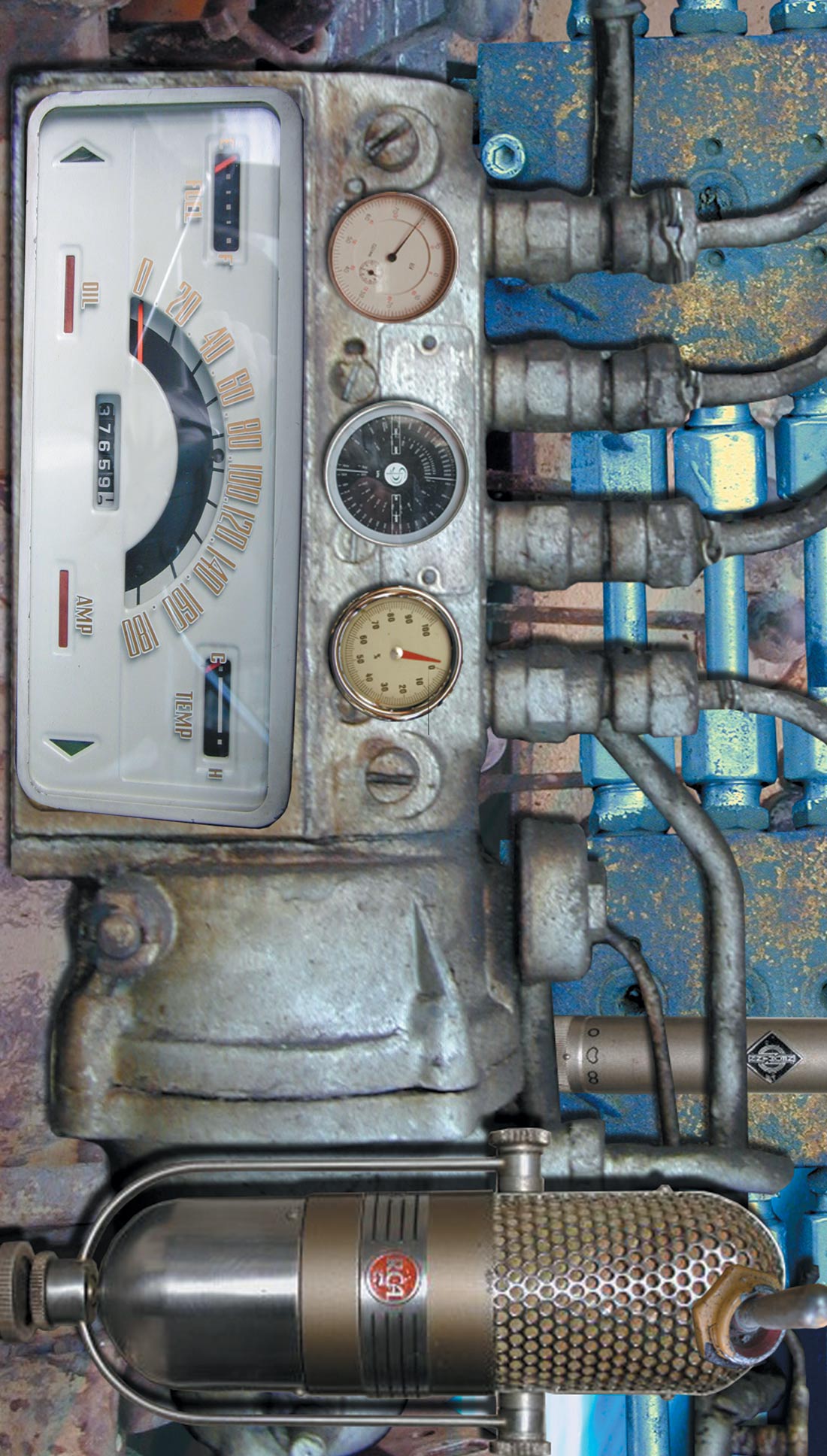

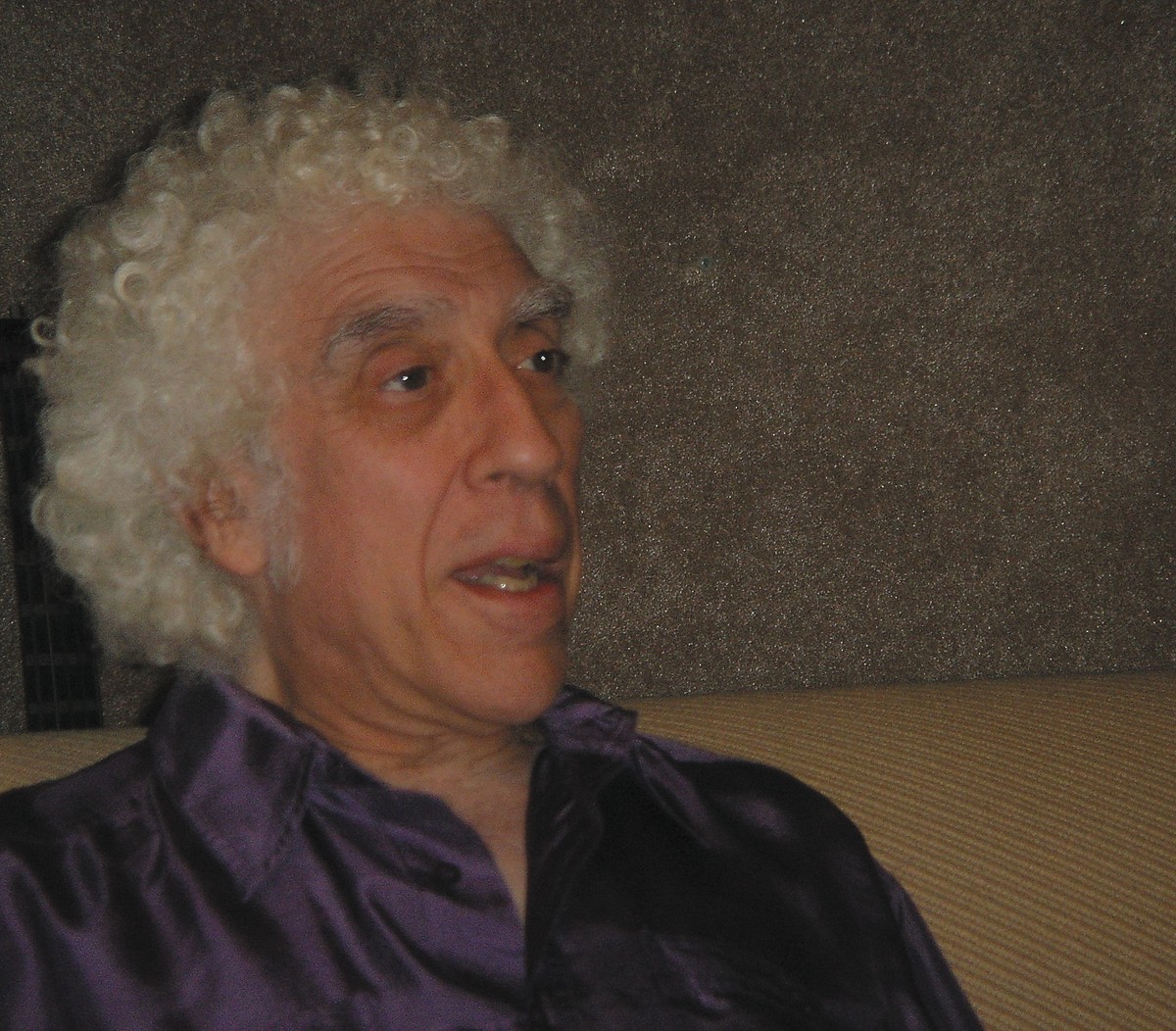
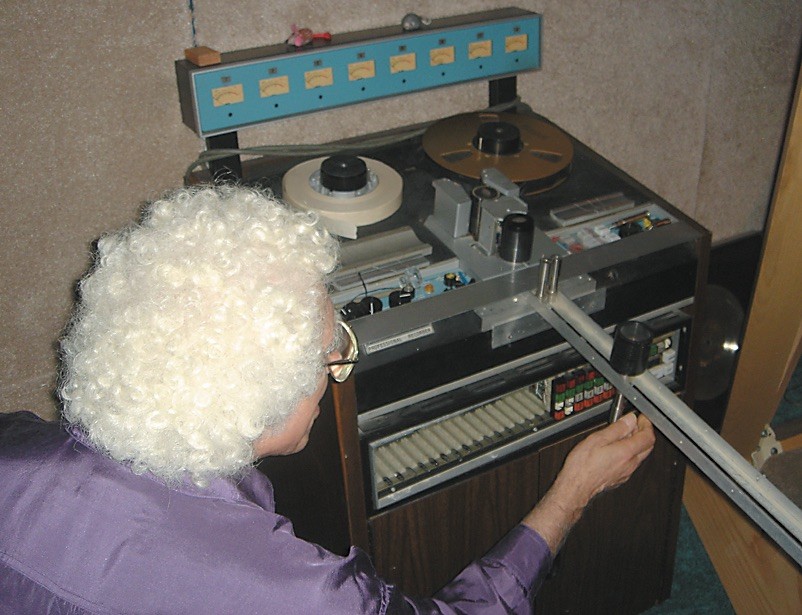
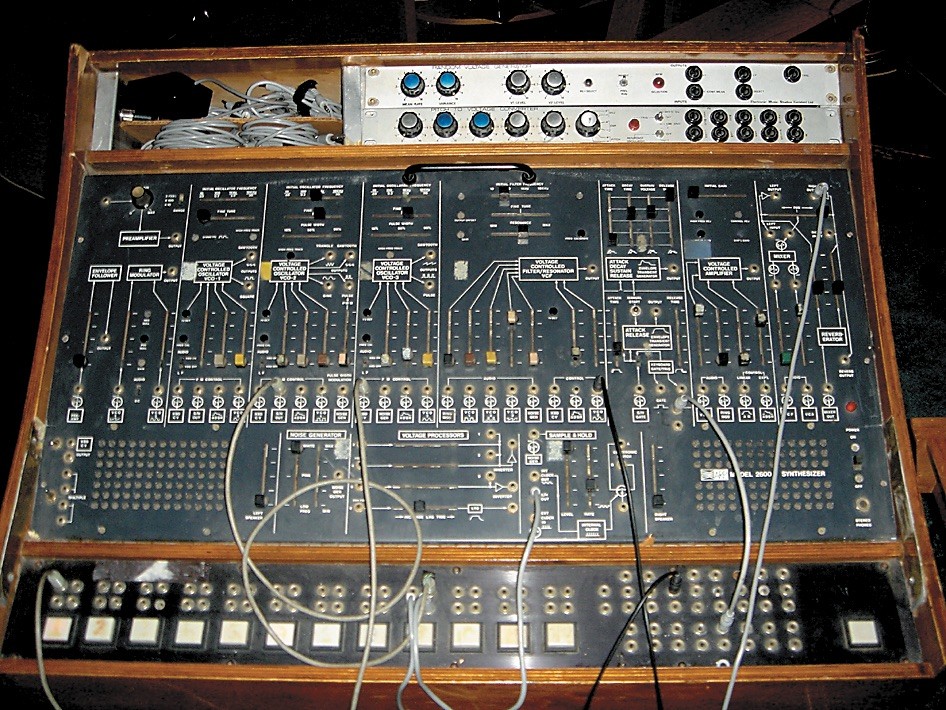
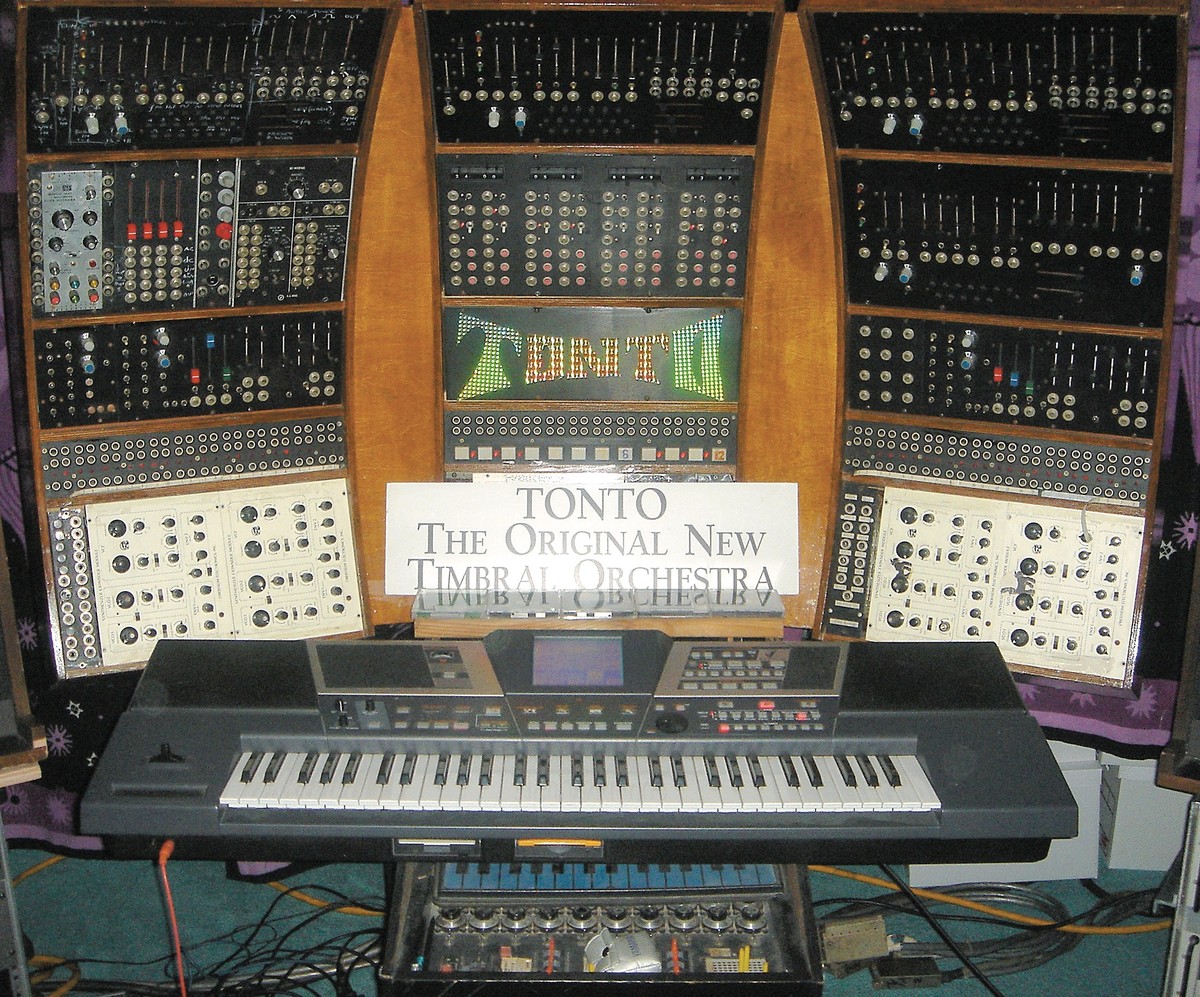
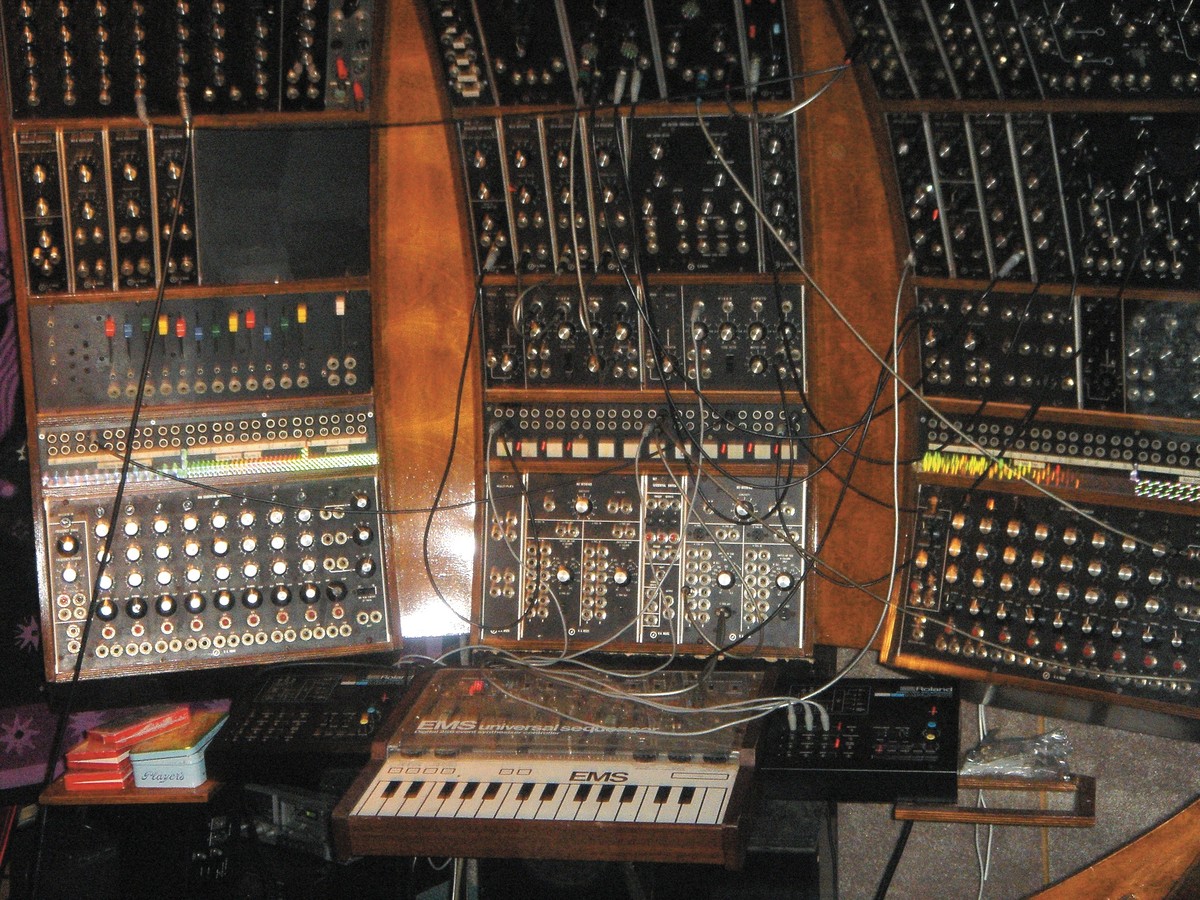
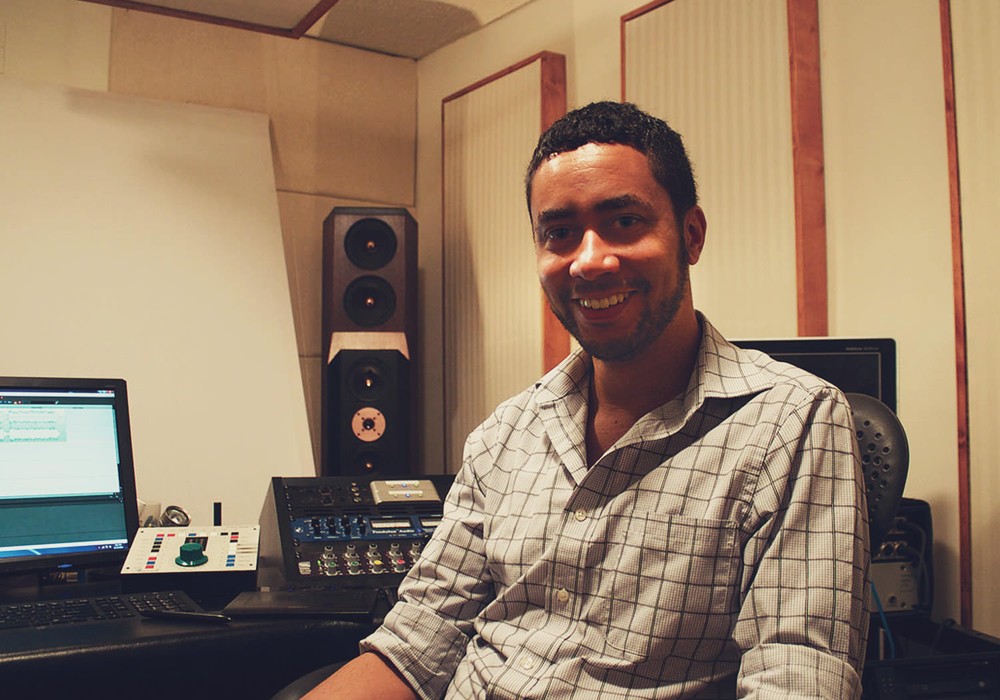
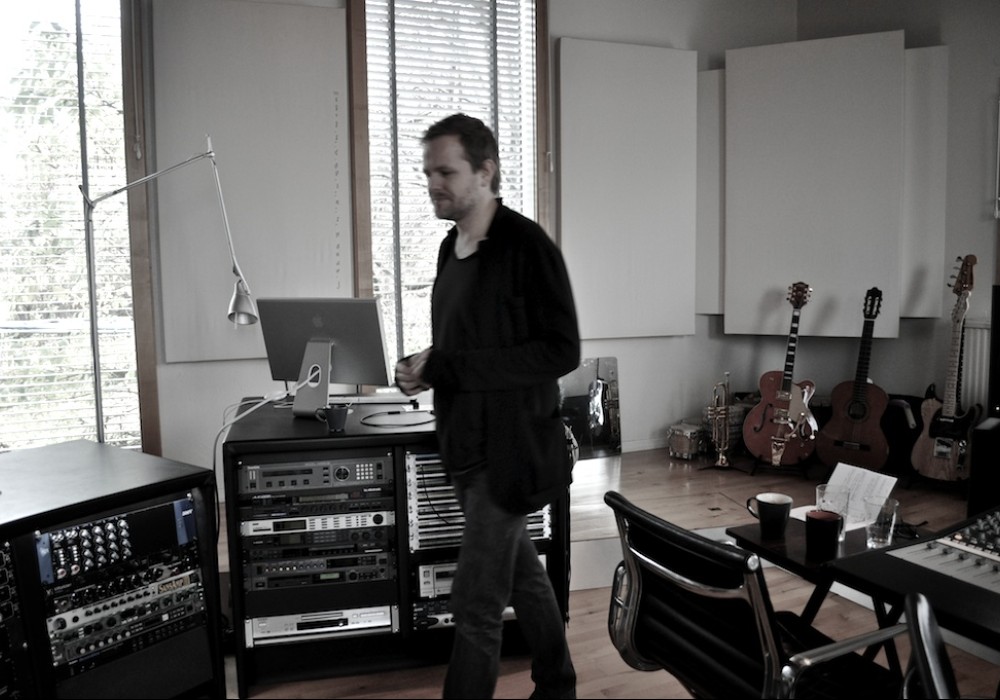
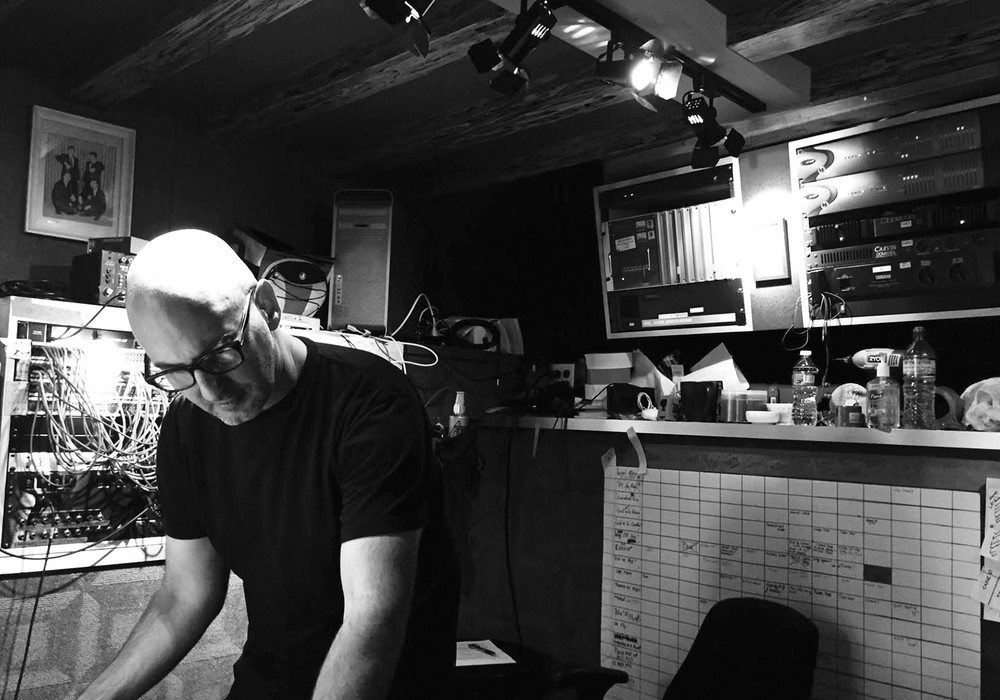
_display_horizontal.jpg)
